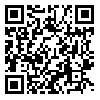Sat, Jul 27, 2024
[Archive]
Volume 14, Issue 2 (6-2022)
itrc 2022, 14(2): 1-13 |
Back to browse issues page
Download citation:
BibTeX | RIS | EndNote | Medlars | ProCite | Reference Manager | RefWorks
Send citation to:



BibTeX | RIS | EndNote | Medlars | ProCite | Reference Manager | RefWorks
Send citation to:
Malek M P, Naderi S, Gharaee Garakani H. A Review on Internet Traffic Classification Based on Artificial Intelligence Techniques. itrc 2022; 14 (2) :1-13
URL: http://ijict.itrc.ac.ir/article-1-521-en.html
URL: http://ijict.itrc.ac.ir/article-1-521-en.html
1- Telecommunications Department Broadcast University (IRIBU) Tehran, Iran
2- ICT Research Institute (ITRC) Tehran, Iran ,Naderi@ITRC.ac.ir
3- ICT Research Institute (ITRC) Tehran, Iran
2- ICT Research Institute (ITRC) Tehran, Iran ,
3- ICT Research Institute (ITRC) Tehran, Iran
Abstract: (1805 Views)
Almost every industry has revolutionized with Artificial Intelligence. The telecommunication industry is one of them to improve customers' Quality of Services and Quality of Experience by enhancing networking infrastructure capabilities which could lead to much higher rates even in 5G Networks. To this end, network traffic classification methods for identifying and classifying user behavior have been used. Traditional analysis with Statistical-Based, Port-Based, Payload-Based, and Flow-Based methods was the key for these systems before the 4th industrial revolution. AI combination with such methods leads to higher accuracy and better performance. In the last few decades, numerous studies have been conducted on Machine Learning and Deep Learning, but there are still some doubts about using DL over ML or vice versa. This paper endeavors to investigate challenges in ML/DL use-cases by exploring more than 140 identical researches. We then analyze the results and visualize a practical way of classifying internet traffic for popular applications.
Keywords: Internet Traffic Classification, Network Traffic Analysis, DL, ML, Artificial intelligence
References
1. [1] Rezaei, S., & Liu, X. (2020). Multitask Learning for Network Traffic Classification. 2020 29th International Conference on Computer Communications and Networks (ICCCN). doi:10.1109/icccn49398.2020.9209652
2. [2] Dong, Y., Zhang, M., & Zhou, R. (2018). Classification of Network Game Traffic Using Machine Learning. Communications in Computer and Information Science, 134–145. https://doi.org/10.1007/978-981-13-0893-2_15
3. [3] Oudah, H., Ghita, B., Bakhshi, T., Alruban, A., & Walker, D. J. (2019). Using Burstiness for Network Applications Classification. Journal of Computer Networks and Communications, 2019, 1-10. doi:10.1155/2019/5758437
4. [4] Argha Ghosh, Dr.A.Senthilrajan (2019), Classifying network traffic using DPI and DFI
5. [5] Sengupta, S., Ganguly, N., De, P., & Chakraborty, S. (2019). Exploiting Diversity in Android TLS Implementations for Mobile App Traffic Classification. The World Wide Web Conference on - WWW 19. doi:10.1145/3308558.3313738
6. [6] Fathi-Kazerooni, S., Kaymak, Y., & Rojas-Cessa, R. (2019, May). Identification of User Application by an External Eavesdropper using Machine Learning Analysis on Network Traffic. In the 2019 IEEE International Conference on Communications Workshops (ICC Workshops) IEEE.
7. [7] D. Li, Y. Zhu, and W. Lin, ``Traf_c identi_cation of mobile apps based on variational autoencoder network,'' in Proc. 13th Int. Conf. Comput. Intell. Secure. (CIS), Dec. 2017.
8. [8] Khatouni, A. S., & Heywood, N. Z. (2019). How much training data is enough to move a ML-based classifier to a different network? Procedia Computer Science, 155, 378–385.
9. [9] L. Vu, C. T. Bui, and U. Nguyen, ``A deep learning based method for handling imbalanced problem in network traf_c classi_cation,'' in Proc. 8th Int. Symp. Inf. Commun. Technol., 2017, pp. 333_339.
10. [10] Miao, Y., Pan, L., Rajasegarar, S., Zhang, J., Leckie, C., & Xiang, Y. (2018). Distributed Detection of Zero-Day Network Traffic Flows. Communications in Computer and Information Science Data Mining, 173-191.
11. [11] Usama, M., Qadir, J., Raza, A., Arif, H., Yau, K.-A., Elkhatib, Y., Hussain, A., & Al-Fuqaha, A. (2019). Unsupervised Machine Learning for Networking: Techniques, Applications, and Research Challenges. IEEE Access, 7, 65579–65615.
12. [12] A. Le, J. Varmarken, S. Langhoff, A. Shuba, M. Gjoka, and A. Markopoulou, “AntMonitor: A system for monitoring from mobile devices,” in Proceedings of the 2015 ACM SIGCOMM Workshop on Crowdsourcing and Crowdsharing of Big (Internet) Data, ser. C2B(1)D ’15. New York, New York, USA: ACM, 2015, pp. 15–20.
13. [13] H. F. Alan and J. Kaur, “Can Android applications be identified using only TCP/IP headers of their launch time traffic?” in Proceedings of the 9th ACM Conference on Security and Privacy in Wireless and Mobile Networks, ser. WiSec ’16. New York, New York, USA: ACM, 2016, pp. 61–66
14. [14] Bakhshi, T., & Ghita, B. (2016). On Internet Traffic Classification: A Two-Phased Machine Learning Approach. Journal of Computer Networks and Communications, 2016.
15. [15] Liao, Q., Li, T., & Zhang, W. (2019). An Online Network Traffic Classification Method Based on Deep Learning. 2019.
Send email to the article author
| Rights and permissions | |
 | This work is licensed under a Creative Commons Attribution-NonCommercial 4.0 International License. |





